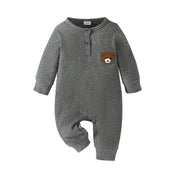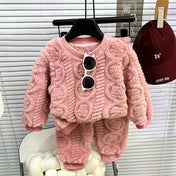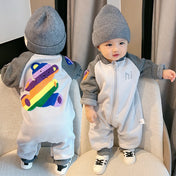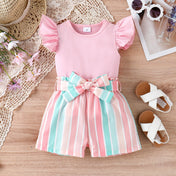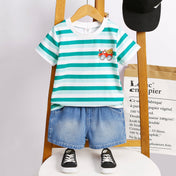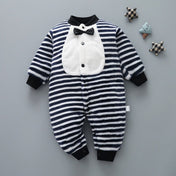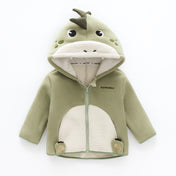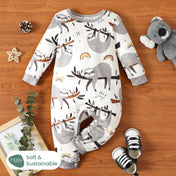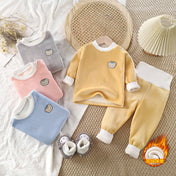Have you ever wondered why parents are so particular when choosing colors for their babies? Whether it’s their babies’ cribs, nursery walls, or mere clothing.
It’s not just about aesthetics. Parents often believe that certain shades bring calmness, comfort, and joy, and they might not be wrong.
Babies respond to their environment, and colors play a significant role in it. From helping them feel relaxed to stimulating curiosity and energy, as a parent, you should have an understanding of how colors affect your babies. That might help you in choosing the right shades for them, for different purposes.
Continue with this blog, and you will learn how colors affect babies’ moods, with some tips for choosing the right shades.
Why Colors Matter to Babies
When a baby is born, they can only recognize colors in the shades of black, white, and gray. But as they grow, they start sensing bright colors.
In 3 to 4 months, babies start to recognize soft colors such as blue, yellow, green, and even gentle shades often found in girls pink color dresses. Their color recognition continues to improve throughout the first year.
Colors are powerful mood influencers. For babies, colors have an impact on how relaxed and secure they feel.
These are some important points to highlight how influential colors can be to babies:
- Initially, bright colors start capturing a baby’s attention. This leads to the strengthening of visual development in them.
- Colors affect emotions. It influences the behaviors of babies, such as providing calmness, happiness, and even helping them sleep.
- The environment you create with colors for your child early in life may shape their color preferences later on.
- Certain colors can create curiosity and enhance your baby’s brain activity.
- Soft shades can make babies feel safe, which in turn reduces anxiety and helps them adapt to new environments.
How Different Colors Affect Babies’ Moods
Understanding the effect of different colors can help you design spaces and pick shades that will support your baby’s well-being. Here is a brief list of colors, with their respective mood impacts:
1. Soft Pastels for Calmness
Soft colors like soft pink, baby blue, and lavender are said to be providers of calmness for kids. They are perfect for stress-free environments and to promote relaxation.
These factors make them a good fit for nurseries. That’s because they make babies feel safe, which leads to better sleep.
2. Bright Colors for Stimulation
Bright shades such as yellow, orange, and red symbolize life and excitement. These colors are playful and refreshing, often used in items like toys or girls red dresses to spark energy and curiosity among babies. They make a great choice for play areas or accent pieces that encourage engagement and liveliness.
However, it's important not to overuse these bright colors, as too much stimulation may lead to restlessness or fussiness. Instead, use them as side colors or in small doses rather than making them the dominant theme.
3. Green for Balance and Health
Green is the color of nature, symbolizing growth and prosperity. It is a soothing, refreshing shade that promotes a sense of calm. Studies show that green can help reduce anxiety and support early learning in young children.
Some experts suggest that green is one of the first colors babies recognize, typically around the 2nd to 3rd month after birth. This makes it a great choice for nurseries or even for selecting boys green clothes, as these outfits can offer both visual stimulation and emotional comfort during early development.
4. Neutral Tones for Warmth and Comfort
Neutral shades like cream, beige, and grey create a sense of warmth without overstimulation. They are the most suitable choices for wall paints or backdrops, allowing bright colored toys and accessories to stand out.
Neutrals are timeless and very light on the eyes; babies can look at these colors without getting bored or fussy. These shades are timeless and easy to contrast with other shades.
5. Cool Shades for Relaxation
Cool colors such as light mint, teal, and blue create a sense of calm and peace. They are favorable for spaces meant for rest and comfort.
They are a good match with natural light, as they give a very peaceful vibe. For babies, try some cool shades for the purpose of relaxation and peace.
6. Contrasting Colors for Visual Development
As newborns can only detect high contrast colors like black, white, and gray, these types of colors can be very helpful in strengthening visual focus in babies. Parents should consider using such colors more in the early days, for example, in toys or activity mats.
Right Shades to Use
There are a lot of options for babies in which you can select colors, which might influence their moods, such as what color the nursery should be, or what shades their clothes should be. Here are some basic color-coding tips for you:
For the Nursery
- Use soft or neutral colors for walls to create a soothing and calm environment for your baby.
- Add some bright colors through toys to bring some life to the area.
-
You can also consider using natural tones like green to create a balanced, timeless look.
For Clothing
- Every day, casual wear for babies should include light pastels, which will give them a soft, gentle touch.
- For playtime outfits, go for bright colors to keep their moods cheerful.
- Seasonal shades, i.e., warm, light tones for winter and cool tones for summer, can help your baby feel cozy with the seasons.
For Toys and Accessories
- Choose contrasting colors in toys for kids that support early visual development.
- Try to avoid using bold colors in nurseries or when the baby is trying to sleep.
- Since newborns can only recognize black and white, offer them toys for kids in these shades during the early days.
Conclusion
We hope that you have got some idea of how colors impact your babies’ moods, and what colors should be preferred in the everyday use of babies' routines.
By understanding the psychology behind colors, parents can create environments that promote calmness and joy, with healthy growth in their babies.
FAQs
Q: Which colors are best for a baby’s nursery?
A: Soft shades and shades of green, with neutral tones, are suitable to be used in a baby’s nursery to create a soothing environment.
Q: When do babies start seeing colors?
A: Newborns recognize shades of black, white, and gray in the initial days. After 3-4 months, they start recognizing other colors like red, yellow, and green.
Q: Are bright colors bad for babies?
A: No. Bright colors are good for playtime and toys, but they should be avoided in sleeping areas.
Q: Do colors impact a baby’s sleep?
A: Yes. Calming, soft tones like pastels or cool colors can encourage relaxation and better sleep.
Q: What colors help with early development?
A: Black-and-white shades are great for newborns. As their vision develops, introduce vibrant colors for toys and soft colors for relaxation.

